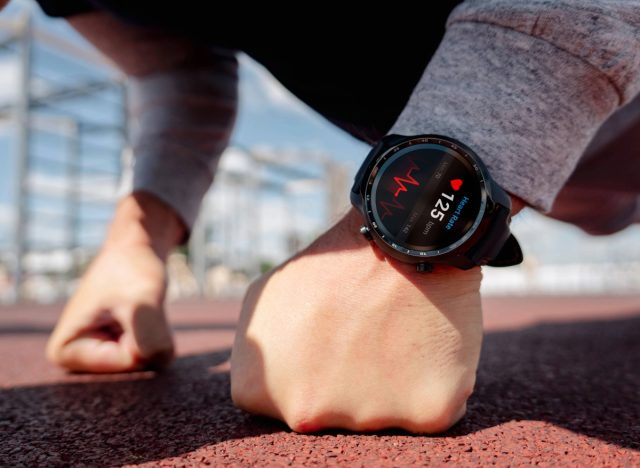
The more insight you possess for your workouts, the more successful they become. That’s why understanding how to calculate your fat-burning heart rate is crucial, allowing you to tailor your sweat sessions for maximum results.
Calculating your fat-burning heart rate may seem daunting initially, but fear not—it’s simpler than you think, and the payoff is well worth the effort. Suddenly, your exercise routines become laser-focused on precisely what your body needs to incinerate stubborn calories and crush your weight-loss goals.
Whether you’re a fan of heart-pounding HIIT sessions, thrive on circuit training and intervals, or prefer the steady burn of long endurance-focused workouts, knowing your fat-burning heart rate ensures every step you take brings you closer to your ultimate fitness goals.
Here’s how to calculate your fat-burning heart rate:

Calculating your fat-burning heart rate isn’t overly complex, but it does involve a bit of math. Begin by estimating your maximum heart rate (MHR) by subtracting your age from 220. Once you have your MHR, you can identify your fat-burning zone, typically spanning from 60% to 70% of your MHR. This zone is where your body primarily taps into fat as a fuel source. To determine your fat-burning heart rate range, multiply your MHR by 0.6 and 0.7. That’s it! You’ve now found the optimal range where fat burns most efficiently.
The benefits of knowing your fat-burning heart rate for workouts:

Knowing your fat-burning heart rate gives you the power to optimize your workouts fully. By staying within this zone during cardio exercises, you maximize the efficiency of your calorie burn. This enables you to torch more fat in less time, making your workouts both more effective and time-efficient.
Understanding your fat-burning heart rate allows you to tailor your workouts to your fitness objectives. Whether you’re aiming to shed pounds or improve endurance, maintaining your heart rate in the fat-burning zone ensures you’re progressing toward your desired results.
The best workout types for increasing your fat-burning heart rate:

Now that you’ve mastered the basics of calculating your fat-burning heart rate, it’s time to put that knowledge into action at the gym. While any form of exercise will elevate your heart rate, certain workout styles excel at ramping up fat burning.
High-intensity interval training (HIIT) steals the spotlight in this regard, featuring intervals of intense effort followed by brief recovery periods. HIIT not only spikes your heart rate during the workout but also maintains it at an elevated level post-exercise, triggering a prolonged fat-burning phenomenon known as the afterburn.
Alternatively, circuit training variations such as intervals, AMRAP (As Many Rounds As Possible), or EMOM (Every Minute on the Minute) sessions offer equally effective fat-burning potential.
Furthermore, steady-state cardio workouts like brisk walks or sustained jogging keep your heart rate elevated over an extended period, engaging numerous muscle groups and maximizing calorie burn for optimal fat-loss results.


